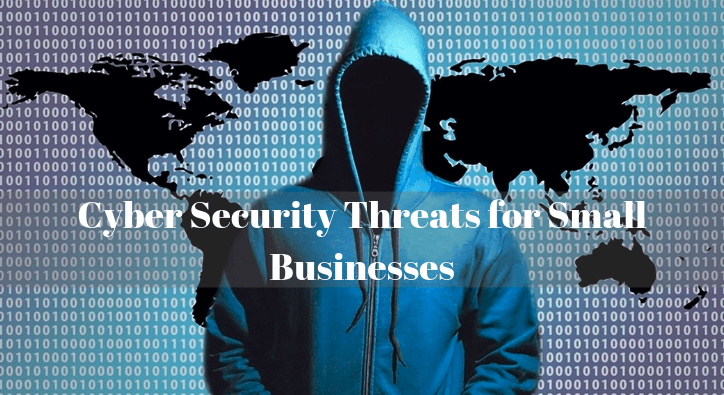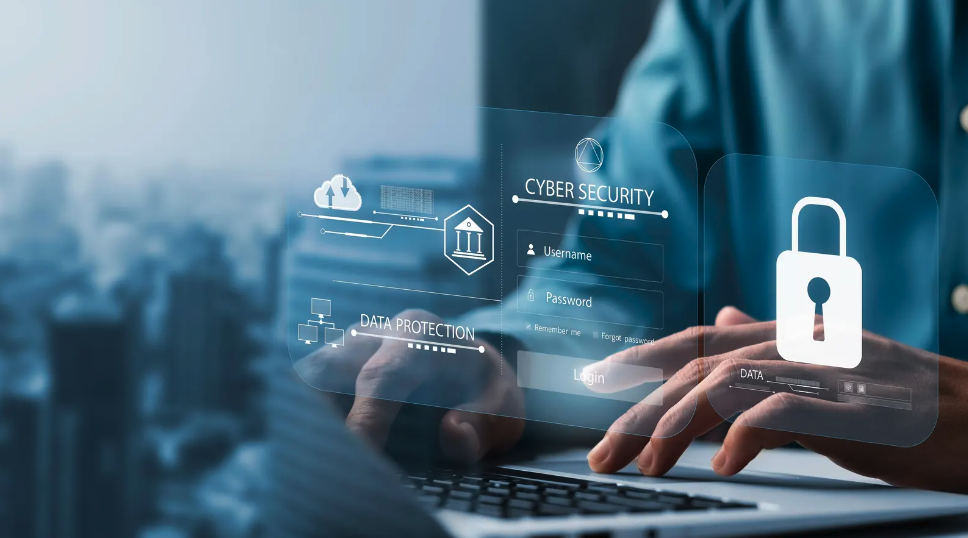Common cyber security threats for small business have become a critical issue, especially in 2024, where the evolving digital landscape presents numerous challenges and risks.
Often perceived as having weaker security measures, small businesses are particularly susceptible to these threats.
This vulnerability is underscored by the fact that, according to the Coveware 2022 Quarterly Report, 82% of ransomware attacks targeted companies with fewer than 1,000 employees, indicating a strategic shift by cybercriminals toward smaller, more vulnerable targets.
The increasing sophistication of attacks further complicates the cyber security for the small business landscape in 2024.
Credential leaks, for instance, have remained a persistent threat, with a significant portion of these credentials being corporate.
This situation is exacerbated by the rise of credential stealer malware, which obtains a majority of credentials in plain text, bypassing encryption.
Additionally, the misuse of brands for digital fraud has seen a slight increase, with brand impersonation tactics being used in social media profiles, apps, and advertisements.
Small businesses in 2024 also face new challenges from advancing artificial intelligence (AI) technologies.
These advanced scams often leverage AI and deepfake technologies, making it increasingly difficult to differentiate between legitimate and fraudulent communications.
This evolving threat landscape emphasizes the urgent need for small businesses to adopt comprehensive cybersecurity measures.
So, in this article, let’s discuss how small businesses can remain vigilant and proactive in their approach to cybersecurity, adapting to the changing environment to protect their assets, data, and reputation in the digital world.
Phishing Attacks
These attacks typically involve fraudulent communication that appears to come from a trusted source, aiming to trick individuals into divulging sensitive information such as login credentials, financial data, or other personal details.
In 2024, the use of artificial intelligence in crafting more convincing phishing emails has notably increased, making these attacks even more sophisticated and more challenging to detect.
Small businesses are particularly vulnerable to various phishing techniques. The most common types of phishing attacks include those using malicious URLs, emails from compromised third-party accounts, and those containing malware or ransomware.
Egress’ 2024 Email Security Risk Report reveals that 94% of organizations have been victims of email phishing attacks. Notably, 58% of organizations suffered from account takeover attacks, often initiated by phishing emails.
The administrative and financial costs of phishing are substantial, with financial losses related to customer churn being the most common outcome.
Small businesses need to be aware of the common characteristics of these scams to identify and avoid phishing attempts.
Phishing emails often mimic well-known brands to gain credibility, with LinkedIn being the most frequently imitated company.
Phishing emails may contain trigger words like “invoice,” “request,” or “verification.”
Businesses should also be wary of emails asking for sensitive information or urging immediate action, especially if they come from unknown sources or display unusual language or formatting.
Educating employees about these risks and implementing robust cybersecurity measures, including regular training and advanced threat detection tools, is crucial.
Such proactive steps can significantly reduce the likelihood of falling victim to these increasingly sophisticated phishing attacks.
Ransomware
Ransomware is malware intended to encrypt or lock data on a device, making it inaccessible until a ransom is paid, usually in cryptocurrency.
The impact on small businesses can be devastating, involving not just the financial burden of the ransom but also significant costs in recovery and potential loss of business reputation.
The trends in ransomware attacks have been evolving. Sophos’s State of Ransomware 2021 reveals about 37% of all businesses and organizations were hit by ransomware in 2020, with an average recovery cost of $1.85 million.
A notable trend is the increased sophistication of these attacks. For example, Barracuda’s 2023 Ransomware Insights revealed that 75% of ransomware attacks in organizations with more than 250 employees began via email, often using sophisticated phishing tactics.
Attack methods have also diversified, with a significant number of attacks originating from web traffic and web applications, especially in consumer services sectors.
Recent developments in ransomware include self-propagation capabilities, where the malware spreads autonomously across a network, and the adoption of advanced code from other ransomware groups, enhancing their ability to bypass security measures.
To protect against ransomware, small businesses should take a layered approach to security. This includes regularly educating employees about social engineering and phishing risks, keeping software up-to-date to patch vulnerabilities, implementing advanced protection technologies, and ensuring regular backups of critical data.
A comprehensive backup strategy is particularly crucial as it minimizes the risk of data loss and can aid in quicker recovery without succumbing to ransom demands.
Weak Passwords and Authentication
The risks associated with weak passwords stem primarily from their vulnerability to being easily guessed or cracked by cyber attackers. Common practices such as using simple, predictable passwords or reusing the same password across multiple platforms amplify these risks.
A strong and unique password must be recognized in the business environment. Strong passwords are typically long and complex and include a combination of letters, numbers, and special characters.
They should be unique to each account to prevent a single compromised password from jeopardizing multiple accounts or systems.
Password managers are often recommended for generating and securely storing complex passwords, making it easier for users to maintain strong, unique passwords for all their accounts.
Implementing multi-factor authentication (MFA) adds an extra layer of security, significantly enhancing account protection.
MFA requires users to provide two or more verification factors to access an account. This means that even if a password is compromised, unauthorized access is still unlikely without the additional verification element.
This could be something the user knows (like a password or PIN), something the user has (like a smartphone or security token), or something the user is (like a fingerprint or facial recognition).
Implementing strong password policies and MFA is crucial for small businesses to safeguard their digital assets. These practices are fundamental components of a robust cyber security strategy, helping to protect against unauthorized access and potential data breaches.
Adopting these measures demonstrates a proactive approach to cybersecurity, which is crucial for maintaining the integrity and trustworthiness of small businesses in the digital space.
Unsecured Wi-Fi Networks
Using unsecured Wi-Fi networks poses significant risks, especially for small businesses. These risks are not just theoretical but have real-world consequences.
The vulnerabilities of unsecured Wi-Fi networks primarily stem from their openness, which allows malicious actors easy access.
This openness enables various cyber attacks, such as man-in-the-middle attacks, where attackers intercept communication between a user and a server, potentially capturing sensitive information.
Additionally, unsecured networks can distribute malware, with attackers planting harmful software on connected devices.
In order to mitigate these risks, your business must implement robust security measures for its Wi-Fi networks.
The first step in securing a Wi-Fi network is to use strong encryption, such as WPA2 or WPA3. This helps protect the data transmitted over the network.
Setting a robust and unique password for network access is also essential. This password should be complex and changed regularly to prevent unauthorized access.
For employees needing to connect to public Wi-Fi, educating them on the risks and providing guidelines for safe usage is essential. A Virtual Private Network (VPN) is recommended when connecting to public Wi-Fi.
A VPN encrypts data traffic, making it much more difficult for hackers to intercept and decipher information.
Additionally, encouraging SSL connections and advising against sharing sensitive information over public networks can enhance security.
Given the increasing reliance on internet connectivity for business operations, understanding and addressing the risks associated with unsecured Wi-Fi networks is critical.
By taking these precautions and educating employees, businesses can significantly reduce their vulnerability to cyber threats in unsecured Wi-Fi environments.

Insider Threats
Insider threats pose a significant challenge to small businesses, often manifesting in two primary forms: malicious intent from disgruntled employees and unintentional data breaches from careless actions.
Proofpoint noted insider threat increases by comparing the Ponemon Institute’s 2022 Cost of Insider Threats Global Reports. There was a 44% increase in incidents from 2020 to 2022, totaling $15.38 million.
So, to mitigate these risks, it’s crucial to adopt strategies encompassing both technology and human elements. Firstly, regular employee training is essential.
This training should focus on cyber security awareness, including recognizing phishing attempts and the importance of strong password practices. Emphasizing the consequences of data breaches and each employee’s role in safeguarding company data is also vital.
In addition to training, implementing robust monitoring systems is crucial. These systems can detect unusual access patterns or data transmissions, often indicating a potential insider threat.
Monitoring should be combined with strict access controls, ensuring employees only have access to the data necessary for their roles.
Another critical strategy is to establish a culture of security within the organization. This involves clear communication about cybersecurity policies and encouraging employees to report suspicious activities without fear of reprisal.
A transparent and open environment can often deter potential insider threats by reducing the likelihood of disgruntled employees and fostering collective responsibility for security.
Finally, it’s essential to regularly update and review cybersecurity policies and procedures to adapt to evolving threats.
This includes revisiting access privileges, updating software and security tools, and ensuring that all security measures align with current best practices.
Given the complex nature of insider threats, a multi-faceted approach combining employee training, monitoring, access control, and a strong security culture is crucial for small businesses to protect themselves effectively.
Outdated Software and Patching
Outdated software represents a latent threat within your organization that, if left unchecked, could have serious consequences. We’re not just talking about inconvenience; we’re talking about the potential for data breaches, ransomware attacks, and operational disruptions that could cripple your entire business.
Failure to update software makes it a tempting target for cyber threats, opening the door to data breaches and unauthorized access. Using outdated software can lead to non-compliance with industry regulations, resulting in legal consequences, fines, and damage to the company’s reputation.
Outdated tools must comply with current data protection standards, compromising the privacy of sensitive information and extending the consequences beyond the digital realm.
Applying patches on time acts as a digital watchdog, patching known vulnerabilities and strengthening defenses against evolving cyber threats.
Updates provide security enhancements and software performance improvements to keep your business running smoothly. Regular updates provide guidance, help organizations meet regulatory requirements, and demonstrate a commitment to integrity and trustworthiness.
A well-thought-out patch management strategy includes consistent auditing, careful testing, and strategic scheduling of updates during non-critical hours to create a robust defense against cyber threats.
Identifying and prioritizing critical systems ensures that key components are updated with the latest protections.
Educating the team on the importance of software updates turns every employee into a guardian of digital assets, contributing to a collective effort for cyber security resilience.
Conclusion
Let’s close by looking at cybersecurity, a powerful force that can help or hinder your business’s ability to grow.
Consider a scenario where strengthening your security protects your small business and opens up new opportunities.
In today’s digital age, where every piece of data has immense value, addressing cyber security threats transforms your business from vulnerable to virtually fortified.
Cybersecurity isn’t just a necessity; it’s a critical aspect of your business. Phishing attacks, with their potential for significant financial loss, reputational damage, and operational disruption, underscore the urgency of protecting your digital assets.
Consider this: building robust cyber security is synonymous with building trust. It’s about assuring your customers that their data is safe while complying with stringent regulations.
At Nexalab, we understand the unique cybersecurity challenges facing small businesses in Australia.
Well, imagine having a team that understands Australian businesses’ specific cyber challenges and tailors solutions specifically for your unique needs.
What if Nexalab could turn threats into advantages, making cyber security a strategic asset for your business?
How would it feel to know your business is protected and strategically positioned to grow in the digital landscape?
Let’s tackle common cyber security threats for small businesses and discover how Nexalab can help your business achieve a secure and prosperous future.




